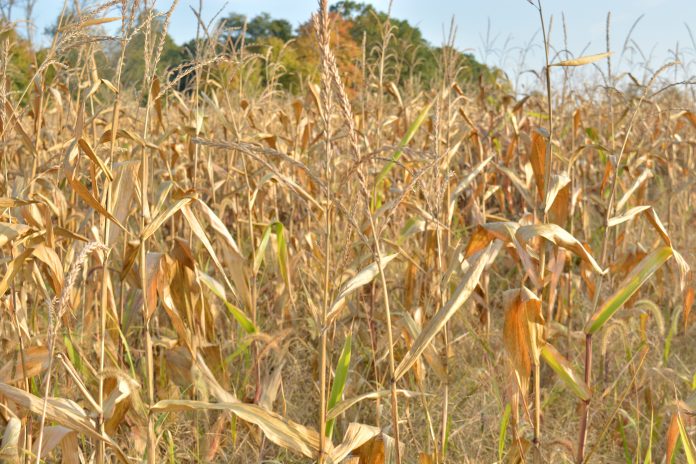Hello, northeast Ohio! When I last wrote back in August, I talked about how “resiliency” was the key theme at the 24th Congress of the International Farm Management Association, held in Canada this summer.
Fast forward to today, and that word still holds tremendous significance — especially as farmers across Ohio are recovering and adapting to the drought conditions that have affected more than two-thirds of our state, sparing only the far northeast.
Over the past 10 days, a glimmer of hope has come in the form of much-needed rain, helping to dampen the drought’s grip. While this rainfall has provided relief, the economic consequences of this summer’s drought will linger for quite some time. With that in mind, what management strategies should we consider as we move forward?
Federal assistance
Economic relief is available through various U.S. Department of Agriculture assistance programs following a natural disaster declaration.
Currently, producers in 57 counties —representing 64.8% of Ohio’s counties — are eligible for federal assistance through the USDA Farm Service Agency. These programs offer emergency loans, emergency haying and grazing of Conservation Reserve Program land, compensation for grazing losses and support for transporting water to livestock, as well as assistance for losses related to nurseries, vines and other specialty crops.
It should be noted these programs are available for both new and existing users of FSA services. Complete descriptions of these programs can be found in an article titled “USDA Farm Service Has Assistance Program for Ohio Farm Operations Impacted by Drought” published on our Ohio State University farm office website last month at farmoffice.osu.edu.
The FSA has also developed an online disaster assistance discovery tool which allows producers to learn which assistance programs will fit their operation due to this year’s drought. This easy-to-use tool can be accessed at farmers.gov/protection-recovery/disaster-tool.
Feed management. Dairy and livestock producers are encouraged to take a feed inventory. Many have been feeding hay since June, and with reduced harvest tonnage due to the drought, there may be concerns about having enough feed to last through the winter.
For those needing to purchase hay, the Ohio Department of Agriculture has developed a hay directory which can be accessed at agri.ohio.gov/divisions/administration/resources/ohio-hay-directory.
Farmers can consider alternative feeds to supplement their livestock diets, especially when forage inventories are low. Dairy producers are encouraged to explore the Buckeye Dairy Newsletter, which features a dedicated column in each issue comparing the economics of various feedstuffs commonly used in dairy rations.
More information can be found at dairy.osu.edu/newsletter/buckeye-dairy-news. Additionally, beef producers should take advantage of regional workshops on winter feeding options, scheduled across eastern Ohio later this month. Check out details at beef.osu.edu.
Financial management
Now is not the time to shy away from your numbers. All signs point to even tighter margins in 2025 compared to this year, making the financial impact of this summer’s drought even more concerning. Cost control will be essential. Once harvest is complete, calculate your 2024 cost per unit (bushel). This information will be invaluable as you set your market price targets.
Be sure to update your balance sheet and review your cash flow projections.
This is also an excellent time to schedule a conversation with your accountant and tax preparer, as there are tax provisions that may allow you to defer recognizing crop insurance payments until 2025.
Additionally, casualty loss provisions are available for the early sale of cattle and livestock, which also can allow you to defer income.
As you start planning your budgets for next year, don’t forget to check out the recently released 2025 corn, soybean and wheat budgets, available at farmoffice.osu.edu/farm-management/enterprise-budgets.
Resiliency
There is one certainty, that farmers are resilient. I encourage you to reach out to your local extension office for additional assistance as you recover and adjust to this year.
And, remember a quote from Mark Nepo which states, “We are stronger, gentler, more resilient and more beautiful than any of us imagine.” Have a good and safe day!













